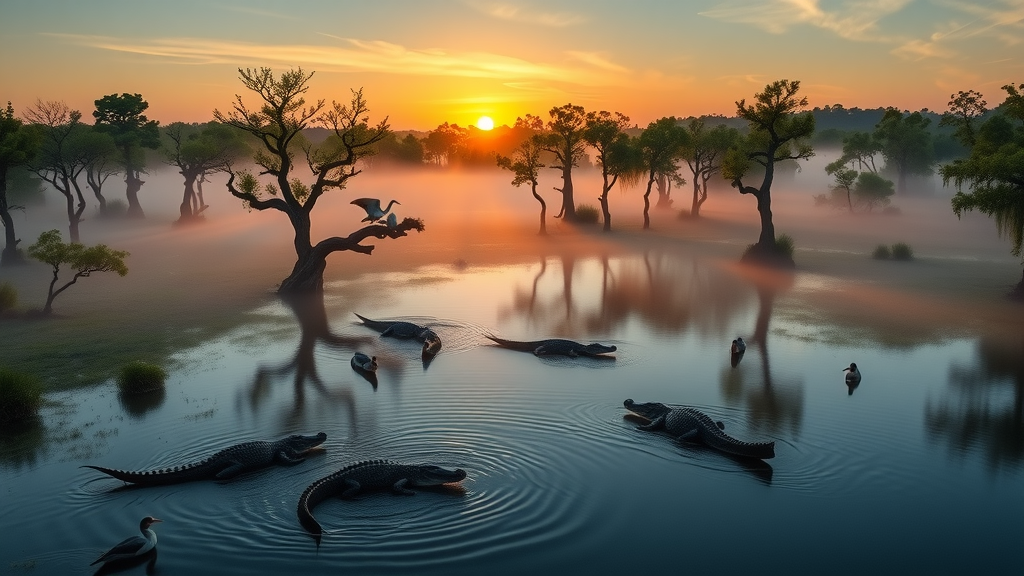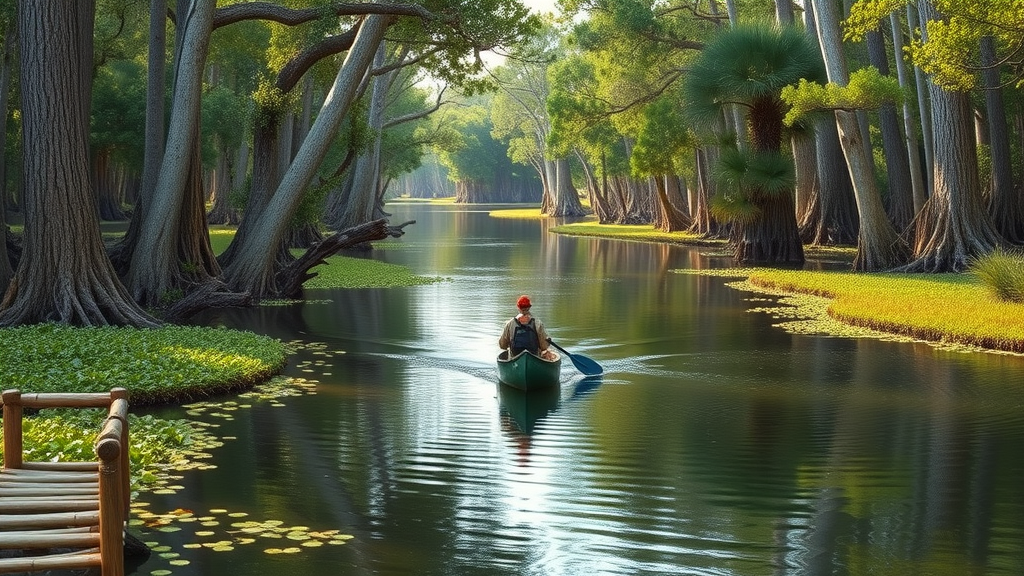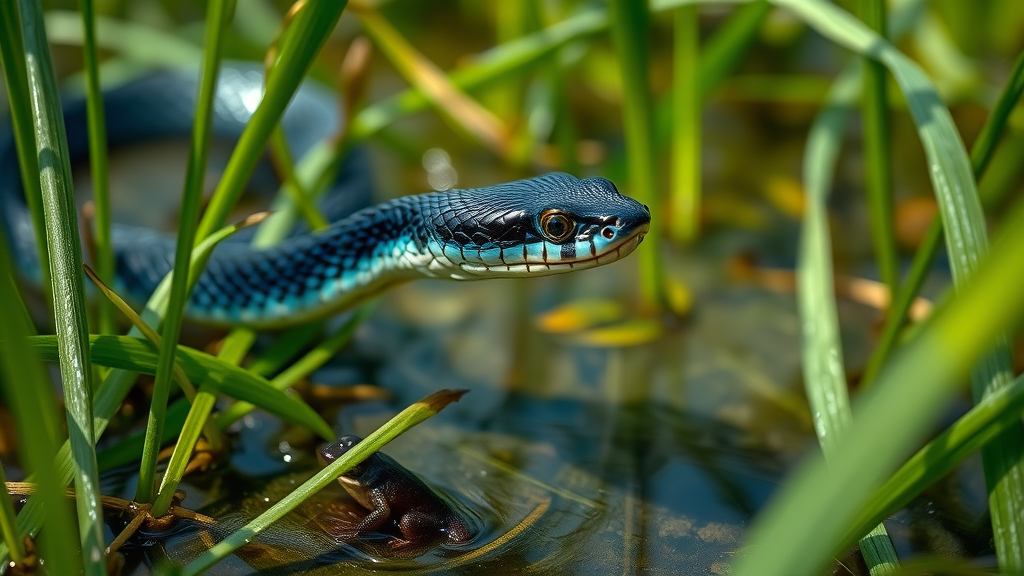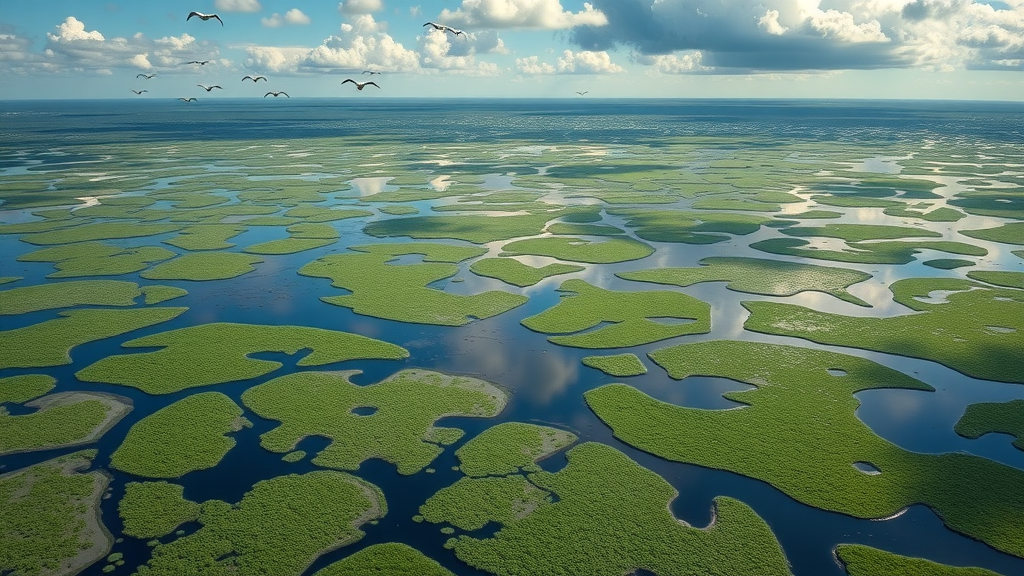Where Wild Florida Begins: Why Exploring Okefenokee National Wildlife Refuge Matters
Step into a world where ancient wetlands tell stories of resilience and rare species thrive undisturbed—a place so ecologically significant that its status as a Wetland of International Importance is recognized around the globe. The Okefenokee National Wildlife Refuge isn't just a destination; it's a living testament to the value of wild land in today's changing world. With over 350,000 acres of protected wilderness, this vast refuge in Georgia forms the headwaters for the Suwannee and St. Marys rivers, serving as a cradle of biodiversity and sanctuary for creatures seldom seen elsewhere.
The phrase “hidden wonders” is no exaggeration here: threatened and endangered species such as the indigo snake, red-cockaded woodpecker, and iconic American alligator call these swampy expanses home. Visitors are drawn not only to its incredible wildlife but also to the sheer diversity of experiences—canoeing past cypress trees draped in Spanish moss, joining wildlife tours, hiking, camping, or pausing at the historic Chesser Island Homestead. But what truly makes Okefenokee vital is the way its thriving amphibian populations act as bio-indicators of the planet's overall environmental health—a reminder that these wild places are interconnected with people’s lives near and far. Understanding this refuge means exploring more than just scenic beauty; it means appreciating a landscape whose well-being reflects our own, setting the stage for a journey into one of America’s most important natural treasures.

Okefenokee’s Rich Tapestry: Understanding This Unique National Wildlife Refuge
Defined by sprawling peat bogs, winding waterways, and floating islands, Okefenokee National Wildlife Refuge stands apart as both an ecological and cultural landmark. Established to conserve critical habitats for migratory birds and countless other wildlife species, this refuge offers more than a safe haven—it’s a living classroom for understanding the interconnectedness of water, land, and life. As the headwaters of two significant rivers, Okefenokee plays a crucial hydrological role in the region; yet its importance extends far beyond local boundaries, earning it recognition under the RAMSAR Convention as a Wetland of International Importance.
The presence of threatened and endangered animals like the red-cockaded woodpecker and eastern indigo snake exemplifies why such places matter: without deliberate protection, these species might be lost. Meanwhile, vast amphibian populations, acting as sensitive bio-indicators, let scientists monitor environmental quality on a global scale. A place of such ecological diversity naturally attracts citizen scientists, conservationists, and the merely curious alike—but those unaware of its value may not realize that places like Okefenokee are becoming increasingly rare. The loss of wetlands worldwide, often for development or agriculture, means that understanding and cherishing the Okefenokee’s unique mosaic of habitats is more essential than ever. For those seeking a deeper connection to the natural world and a better understanding of environmental health, Okefenokee lays out its secrets—if only people take the time to look.

The Lasting Benefits of Visiting and Protecting Okefenokee National Wildlife Refuge
When nature and conservation expertise converge, unique opportunities emerge—not just for rare wildlife, but also for everyone who wants to reconnect with the world outside busy urban landscapes. Visiting Okefenokee National Wildlife Refuge offers more than a chance to see alligators or spot endangered birds; it’s a way to immerse in habitats that have remained unchanged for centuries. From hiking trails and rich photography opportunities to guided boat tours, the refuge provides accessible experiences that foster appreciation for wild places and their inhabitants.
One significant benefit is direct exposure to the diverse web of life supported within the refuge. Amphibians act as sentinels for global environmental conditions; their health provides visitors with visible cues about ecosystem stability. By participating in programs, hunts, or volunteer days, guests contribute to the broader mission of wildlife preservation, supporting efforts that ensure these environments endure for future generations. As wetlands face mounting pressures, refuges like Okefenokee serve as living, breathing examples of why wetland conservation is more than an environmental issue—it’s essential to public well-being.
From Ancient Swamps to Modern Conservation: A Living Timeline
The story of Okefenokee stretches deep into prehistory, with its vast swampy expanse having shaped both natural and human cultures in the region for millennia. Archaeological traces reveal how local Indigenous peoples once relied on its resources, while the layered history of settlers and the creation of the Chesser Island Homestead add to its cultural tapestry. With its designation as a refuge and subsequent recognition as a Wetland of International Importance, Okefenokee stands as a case study in how the values of conservation have evolved over the centuries.

Today, the refuge is an active site of scientific research, biodiversity monitoring, and community engagement. The move toward World Heritage Site designation underscores the modern recognition of its global significance—a distinction that would further guarantee international support for its ongoing stewardship. Okefenokee’s past and present highlight what’s possible when people work to leave natural gifts in better shape than they found them.
Secrets of Wilderness: What You’ll Discover at Okefenokee National Wildlife Refuge
Stepping into Okefenokee, visitors are immediately immersed in landscapes teeming with life, from stately cypress trees to flocks of migratory birds and elusive mammals like the black bear. The American alligator is an almost-guaranteed sight, with an estimated 15,000 individuals populating the swamp’s waterways. Birdwatchers can marvel at swallow-tailed kites or the haunting calls of sandhill cranes; naturalists keep a lookout for rare reptiles like the gopher tortoise and timber rattlesnake.
Exploring on foot, by canoe, or during one of the refuge’s boat tours, guests encounter first-hand the interdependence of species and see how wild places function without human interference. Whether observing bio-indicator amphibians or appreciating the peace of undeveloped land, these experiences not only fuel curiosity but also inspire conservation action. Each visit serves as a reminder of the wonder that untouched wilderness can still evoke in the digital era.

Conservation Above All: Okefenokee’s Guiding Philosophy and Mission
At the core of Okefenokee National Wildlife Refuge is a deeply rooted commitment to conservation—a mission grounded in both present-day stewardship and a vision for the future. The refuge’s lands and waters are managed using best conservation practices, focusing on ensuring the survival of native species and the habitats upon which they depend. This guiding philosophy shapes decisions at every level, from restoration initiatives to public education and responsible recreation.
Wildlife conservation, as articulated through the U.S. Fish & Wildlife Service’s broader National Wildlife Refuge System, is the thread that weaves together every activity at Okefenokee. The emphasis is not merely on maintaining habitats, but on supporting threatened and endangered animals, restoring ecological balance, and safeguarding resources for generations to come. By offering structured opportunities—like volunteering or participating in scientific monitoring—the refuge invites visitors to become partners in conservation, echoing its ethos of shared responsibility and stewardship. In preserving Okefenokee’s unique character, the refuge stands as both protector and teacher, helping all who visit to see the bigger environmental picture.
Seeing Is Believing: How Okefenokee Delivers Unforgettable Experiences
Nothing captures the essence of a special place quite like stories from those who have discovered its wonders firsthand. Many visitors leave Okefenokee with lasting impressions—not just of its scenery, but of the expertise and warmth extended by its dedicated staff during every adventure. Whether joining a tour, hiking, or boating, it is often the human connections that bring the vast wilderness to life.
Beautiful place with great staff. The boat tour is fairly priced for all the wonderful sights and information. “Nature Nick” is a god tier tour guide that keeps you engaged and laughing. High quality keepsakes from the gift shop and CLEAN BATHROOMS. Everyone here is so friendly and knowledgeable. Thank you again Nick!
Such first-hand accounts embody the success of a place where education, hospitality, and natural beauty are all part of the visitor experience. For anyone seeking adventure, respite, or a new perspective on conservation, Okefenokee offers something truly memorable—proving that wild places are not only to be protected, but savored and shared.
Okefenokee’s Enduring Legacy: Why Wild Places Still Matter
Across the landscape of Okefenokee National Wildlife Refuge, every bird call, ripple of water, and glimpse of rare wildlife echoes a call for preservation and respect. The refuge’s significance is more than scenic; it’s an enduring source of education, wonder, and ecological health—one that bridges communities and ecosystems from the Suwannee River to distant regions. As stewards of this living treasure, the work done at Okefenokee sets a global example for wetland and wildlife conservation, ensuring these wild wonders remain vibrant for all who come after.
For those who have yet to experience the Okefenokee National Wildlife Refuge, now is a pivotal time to discover its value—as a haven for endangered species, a testament to effective ecological stewardship, and an opportunity for meaningful connection with nature. Its continued protection and public engagement promises that the hidden wonders of this extraordinary refuge will endure for future generations.
Contact the Experts at Okefenokee National Wildlife Refuge
If you’d like to learn more about how the Okefenokee National Wildlife Refuge could deepen your appreciation for conservation and natural ecosystems, contact the team at Okefenokee National Wildlife Refuge.
📍 Address: 4155 Suwannee Canal Road, Folkston, GA 31537, USA
📞 Phone: +1 912-496-7836
🌐 Website: https://www.fws.gov/refuge/okefenokee/
Okefenokee National Wildlife Refuge Location and Hours
🕒 Hours of Operation:
📅 Monday: 7:00 AM – 7:30 PM
📅 Tuesday: 7:00 AM – 7:30 PM
📅 Wednesday: 7:00 AM – 7:30 PM
📅 Thursday: 7:00 AM – 7:30 PM
📅 Friday: 7:00 AM – 7:30 PM
📅 Saturday: 7:00 AM – 7:30 PM
📅 Sunday: 7:00 AM – 7:30 PM

 Add Row
Add Row  Add
Add 





Write A Comment